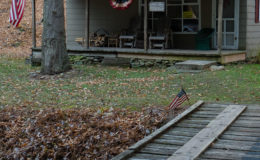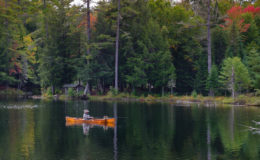Long ago, as a young man, I acquired my first SLR. It was a Fuji body with a 50mm f1.9 lens. Before this acquisition, I had only used “point and shoot cameras. The “fifty” was the standard lens for SLR bodies in those days, useful because 50mm for 35mm film, is a so-called “normal” lens; the field of view close to that of normal human visual perception. At the time, most zoom lenses were far inferior to their so-called single focal length “prime” lens. They also tended to be slow, with narrow apertures that limit subject isolation, and light gathering.
This lens/body combination had an extraordinary ability to recreate what I was actually seeing with my eyes to the film stock.
I remember the joy of discovery when my slides were developed. After many years of shooting compact cameras like the Olympus XA 2, I was able to capture the scene as I remembered it. The lens was razor sharp, and the format was liberating. I was finally able to control the depth of field in an image. I was 18 years old, and I was hooked.
Later in life I became intrigued with digital imaging. The thought that I would be able to control the whole image path, from acquisition to print was irresistible.
Affordable early digital cameras were modest devices. I was forced initially to abandon larger “sensor” photography for point and shoot digital cameras that were available before the millennial change (the few digital SLRs available were very expensive). These cameras were rangefinder devices; it was hard to get a feel for how the final image would appear.
Many of us acquired digital SLRs in the early 2000s. These bodies, whether Canon or Nikon, had smaller than 35mm sensors, forcing a crop factor of 1.5 on the traditional system lenses. As a Nikon user, I began to collect F mount lenses including the Nikkor 50mm f1.8. On a DX format body, like my Fuji S5 or my Nikon D2x, this glass is a 75mm equivalent portrait lens, and I have used it to good effect in this role. I had a Nikkor 35mm f 2.0 that, with the crop factor, was close to a 50mm equivalent but I never felt as though I experienced the sense of immediacy that I experienced with my film SLR and a “normal” lens.
Last year, I purchased a Nikon D 700 which has a full size 35mm sensor (Nikon calls it the FX format) of extraordinary quality. Many of the zoom lenses I had collected were dedicated to the smaller DX format and were not useful. Happily I had begun to purchase a variety of prime lenses, suitable for the full 35mm sensors. I had also kept a lookout for pro level full frame zooms on EBay and have purchased several. These are also fine performers; technology has allowed zoom lenses to approach, and sometimes surpass the optics of earlier primes. Anyway, it is wonderful to use a lens at it traditional (for 35 mm) focal length again.
I keep coming back to that 50mm. It’s small, discrete and pin sharp. The wide aperture allows me to shoot in low light, and creates a pleasant blur effect when desired, for shooting people. In short- it sees what I see.







Naveta Magar
August 17, 2012 10:14 pmI’m impressed! It’s a real shame more folks don’t know about this site, this article covered just what I needed this morning XD